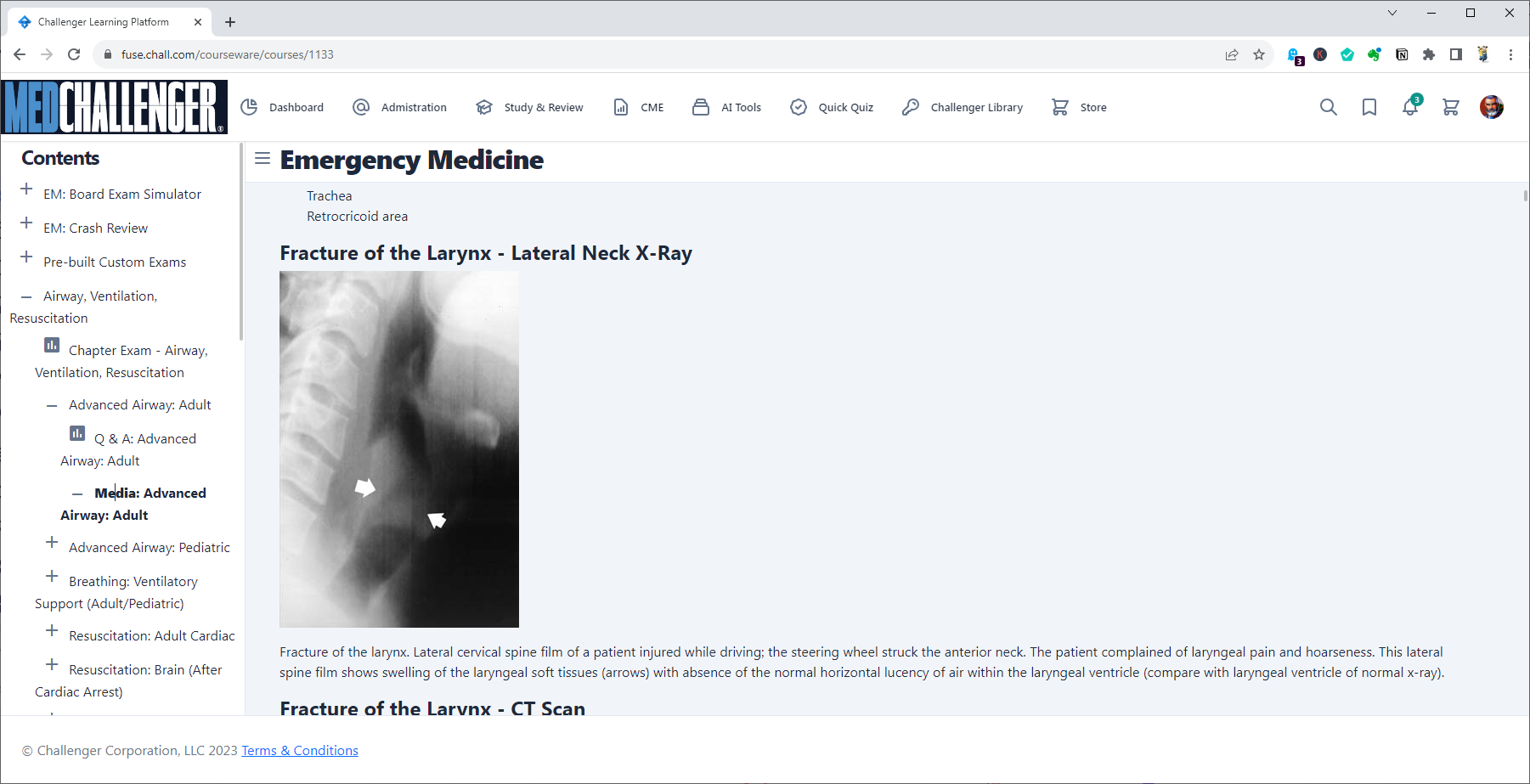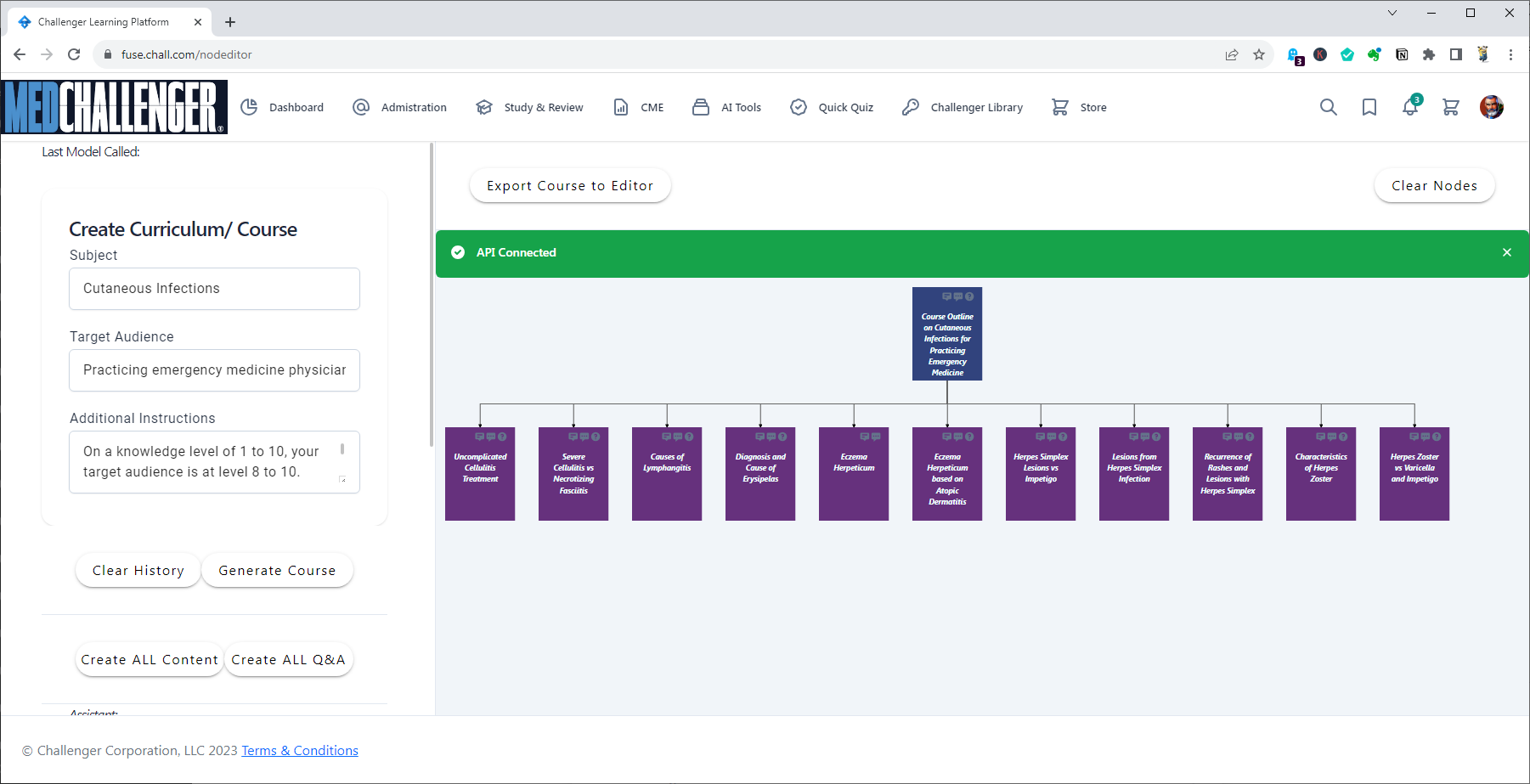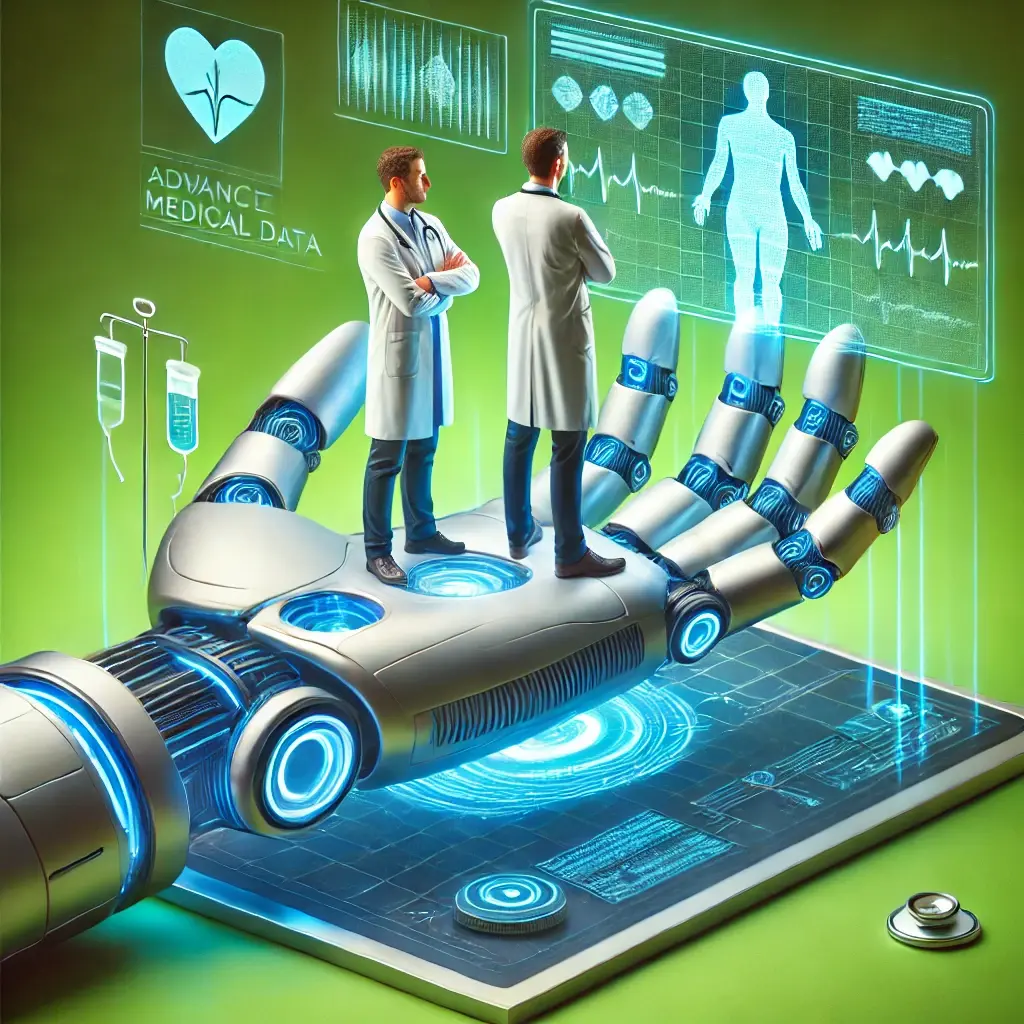Med-Challenger FUSE - AI Enabled Medical Education
No, AI is Not a Fad
Artificial intelligence is not a fad, and not something that can be ignored in the education world. Despite all the wild press and prognostications, it’s not just hype.
If anything, the multi-trillion dollar education industry is under-estimating both the short term and long term impacts of AI on the industry. At minimum, AI will reduce the cost of tools and learning resources by 20x to 50x in some areas, and completely replace current teaching methods in other areas. Cost structure shifts alone will force change in education. And AI isn’t the only technological factor that will affect education in this decade - mixed and virtual reality late in the decade is another major technological shift heading towards the education industry.
Challenger Corporation has had a long history and longer interest in AI. Our first little acquisition decades ago was a company focused on AI research in education. We’ve been paying particular attention the last year as transformer models rolled out and caught the public eye (and a lot of words in the press).
Out-Acronyming Medicine: LLMs, GANs, RNNs…
These LLMs (Large Language Models) are aimed at a particular problem in AI. They deal with natural language processing - talking to people. Because of how they learn and talk to people, they have significant applicability in other areas, and some limits as well. They’re really the first tangible public product in AI. The application that caught everyone’s attention was ChatGPT - a public facing LLM that people could talk to for free, and get to do some tasks for them.
LLMs are not the only stand-alone AI models being developed and released now, either. Aside from ChatGPT there are a host of competing LLMs and variations being developed by hundreds of companies ranging from tech giants to startups.
- LLM - Large Language Models
- BERT - Bidirectional Encoder Representation from Transformers
- GAN - Generative Adversarial Network
- RNN - Recurrent Neural Networks
- CNN - Convolutional Neural Networks
As you can see, the AI technology people are even better at making acronyms than medical people. The gauntlet has been thrown. 😀
These models and applications are not Artificial General Intelligence (AGI). They aren’t the AI of science fiction. They aren’t self-aware, they don’t have real agency. Like any other computer application, they take stuff in, and put stuff out. What’s different is the complexity and scale. We can now give a computer application incredibly long and complex natural language (pretty much any human language and orthography) and get back structured, clear information.
Impacts In Education
The developments in all these models certainly will change education, and every other area that uses computers. Challenger took it seriously enough that we decided this was one of those inflection points you see in technological progress where suddenly everything changes.We mapped out what we believe the first, second, and third order impacts of LLMs would be, with a focus on general education and medical education, and began rewriting our applications to include AI. The impact map we’ve developed over the last year is very large and complex, with a lot of what-if’s, and I won’t reproduce it all here, but I’ll highlight the five major shifts we see in learning and learning applications, and how they are affecting our own application development and upcoming software releases.
- Move Towards Competency-Based Education
- Adaptive and Personalized Learning, Customized Taxonomy
- Real-Time AI Tutoring, Tailored Interventions
- Real-Time Translation, Seamless Multilingual Content
- Constant Assessment and Feedback
These major shifts in turn create their own impact. The second order impacts of competency-based education include shifts away from degrees, and towards measurements of competency by task and knowledge taxonomy, as well as levels of competency. This in turn impacts the bundling of courses into degrees, and how schools and universities will work and sell learning. Which impacts cost of education and how we finance education. That’s an example of first to second to third order impact mapping. By the time we hit second order impacts, we’re guessing. Nor do we imagine the medical education industry (or any education area) is going to just take the loss of income without a fight. 😀
Rather than pin our concepts of the path of education too far out, we’ve focused on creating a new application framework that can handle multiple types of learning content, integrate AI functions in both learning and assessment, and be flexible enough to shift as the technology shifts. This is what the blog articles we’ll be linking here are about - what’s changing with our new application release, and why we’re making such radical shifts so rapidly.
New Framework for Challenger - Med-Challenger FUSE
Over the next few weeks, Challenger will be releasing new learning software for individuals and institutions that includes some big structural changes, and some initial AI capabilities in line with what I’ve listed above. That includes two components - the editor, where courses are created and maintained, and the learning component where study is done and institutional management lives.
Editing and review are the largest expense category at Challenger. Behind the scenes, we use our own proprietary editing system to maintain tens of thousands of Q&A and remediation, group them into topics and courses relevant to each profession we cover, and try to consistently improve the Q&A, remediation, and references. Course editing has been a behind-the-scenes part of Challenger. With the introduction of the new applications, and more importantly, with generative AI capabilities, we will be opening course production up for institutional customers.
For the learning component, we have moved to an outline structure that can include any content type - image, video, audio, text-based, test components. Chapters in the content can contain any mix of content types, including embedded AI. Some AI components, such as language translations, tutoring, or additional learning materials (i.e. ‘show me all the common comorbidities’, or ‘show me common misdiagnoses’, may open in a new tab on a browser or new window in a phone or tablet application).

The new software framework will run all the courses that you currently have from Challenger, but it is optional. You may continue with the older software and institutional management versions. Some new content types (like AI blocks, or some types of new media) won’t work in the old software, but you do not have to move off the older application until you are ready.
Our new framework also allows the creation of more structured or didactic courses. We did an example back in March 2023 exploring a general non-medical topic to illustrate, in this case the three major deserts of southern Africa. The entire course was generated by LLM, with no human intervention. That image of the Namib, by the way, is not real - it’s AI generated. 🙂
It wasn’t a great course, but it is illustrative of ways a human + AI content system can improve accuracy, improve Q&A and remediation, and illustrates the beginning of what the combination of humans and AI will be able to create a year from now, or two years.

We believe the course creator will help facilitate smaller and more focused courses that can be combined into taxonomies inside institutions, as well as some distinct AI-based features that wouldn’t otherwise be available. For instance, we loaded the 2023 GOLD Report, all 187 pages of it, and turned it into a queryable AI module inside the framework. You can actually talk to the report and ask it questions like “Have their been any changes in treatment of COVID in COPD patients in 2023?”. You get excellent responses. (You also won’t see the GOLD report as a course on the web site, because it’s copyrighted, we were just playing with ‘very very large medical PDFs’.)
While not immediate, it is in our plan to open up our editor and course publication methods as well. The new AI-based generative editor is fascinating all by itself. You can take a topic, and have an LLM lay out a proposed course structure, content, and Q&A (all under human guidance) as a starting place for course building.

You can narrow down the topic as closely as you want, or generate a broad overview (like we did with the deserts course). Then edit the course taxonomy, didactic information, and built-in AI components. AI comes at a computing cost, which we’re both hosting and renting, depending on the module and AI type being used. Some of the heavier computing jobs are going to require some new fee structure to cover the overhead they generate.
We’re going to introduce the new features with a series of blog posts about specific functionality over the next few days, as we prepare to release the new applications, and most of the articles will deal with the new learning features.
We've got comments turned on for these blogs, we want to hear your thoughts and questions.
No matter your program type, no matter the size, Med-Challenger's Institutional Medical Education has a solution for you.
For personal medical education that includes board's prep, MOC, and CME requirements, Med-Challenger has you covered in Family Medicine, Emergency Medicine, Internal Medicine, Pediatrics, Pediatric Emergency Medicine, OBGYN, Physician Assistants, and Nurse Practitioners!



